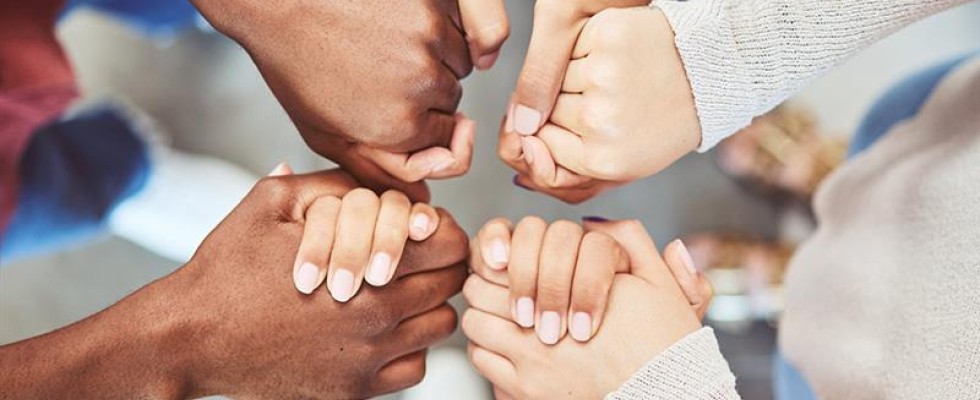
Within the health care industry, organizations and health care workers are finding ways to provide underserved populations with the care and services they need. Evelyn Pozo, a psychiatric social worker with the Geriatric Mental Health Initiative in the Bronx, is one of these people. This city-funded program, which operates in partnership with VNS Health as an official Community Behavior Program, is using homecare to reach Latino seniors where they’re comfortable and fill the gaps.
According to the Substance Abuse and Mental Health Services Administration, only 36% of Hispanic and Latino Americans have received mental health services, compared to 52% for non-Hispanic whites (52%).
“We provide mental health services for the older adult population who have anxiety and depression,” Pozo said. “So, I go into their home once a week for 45 minutes to an hour, and we work on coping skills to reduce their depression, anxiety and whatever in their life they may be struggling with.”
The majority of patients in Pozo’s case load is Latino and Hispanic, since she speaks Spanish. Being able to discuss one’s mental health in their first or second language is very important, she said.
“I have clients who do speak English, but sometimes they want to switch over to Spanish,” Pozo said. “And they want that worker to be able to understand them in their native language as well. Or even if Spanish is their second language, they want to be able to express themselves, especially if they're going through a moment where it's very hard or they feel very passionate about something—they switch over to Spanish and it's very important for them to be heard in that language.”
The National Hispanic Council on Aging says that along with language, being educated on Latino culture, traditions and beliefs is also necessary in being able to provide care to older Latino/a adults, and Pozo agrees. A lot of her clients are Catholic and their faith plays a large role in their lives. Being able to discuss spirituality in their sessions pulls on their strengths.
When it comes to culture, Pozo said family is usually very involved in the lives of older Latino adults—so it’s important for caregivers to be able to communicate with children, grandchildren and other family members.
Language isn’t the only barrier the Latino community faces when trying to access health care; another hurdle is just finding the resources to begin with.
“In this technological world now, some of them still don’t know how to navigate through the computer to find the help they need or the resources to know that there is help out there,” Pozo said.
The Geriatric Mental Health Initiative is working to combat this by going out into the communities and doing events in the field, such as at senior centers, to discuss the services they provide and emphasizing that the program is free, since finances or insurance can also be deterrents to getting help.
VNS Health said that like many other diverse communities in New York City, the Latino community sometimes has stigmas attached to seeking out mental health aid, especially among older adults, Pozo said.
“For some of them, it’s their first time dealing with a mental health therapist,” Pozo said. “I have a couple of clients who have been processing things they never processed, even as children. They never had the tools, or they never had the opportunities. Because years ago, it wasn’t talked about.”
VNS Health and Pozo both said providing mental health support in the home allows patients to feel more comfortable and increases accessibility, as well as providing privacy, which is valuable because mental health conversations can make people feel vulnerable.
Telehealth has also played a pivotal role in making these services as unrestricted as possible. One client, Pozo said, has many people going in and out of her house, including physical therapists and home health aides.
“She feels that it's more comfortable with me calling in at a certain time where she can go into a room privately and not have someone coming in,” Pozo said. “That has been a huge help. For those people who don't feel comfortable having people in the home but feel comfortable through telephone.”
Pozo said she also found she can’t go into sessions with specific clinical lingo, as that tends to make patients shut down. Her advice to those who are interested in reaching underserved populations is to go in with an open mind and a minimal agenda.
“Then that person will feel like, ‘OK, this person is understanding me and is openly wanting to learn from me,’” she said. “And then from there, I have noticed that it's a lot easier for the person be less guarded and be more open to being educated about mental health. Then you're able to work with them on those coping skills and they're more likely to receive that.”
Ultimately, being understanding, knowing it might take time to build a relationship and being OK with that is what it comes down to.
“Build that relationship,” Pozo said, “because then, they’re able to open up, and it's very much beneficial when they feel like they're understood on all levels cultural, and how they're feeling. That allows them to feel (like they) have a safe space … that helps with treatment, that's when I feel like positive changes happen.”
